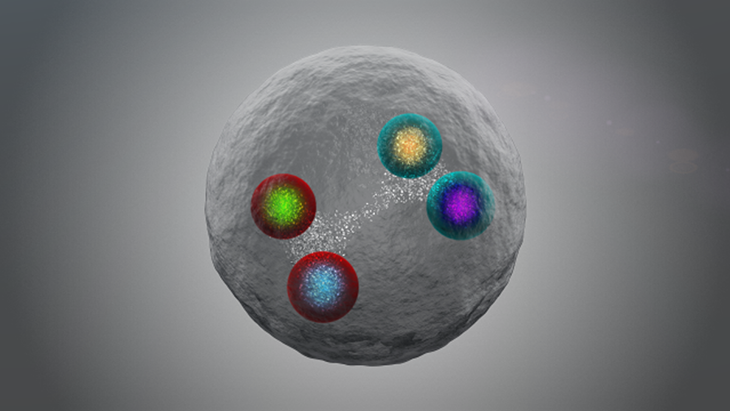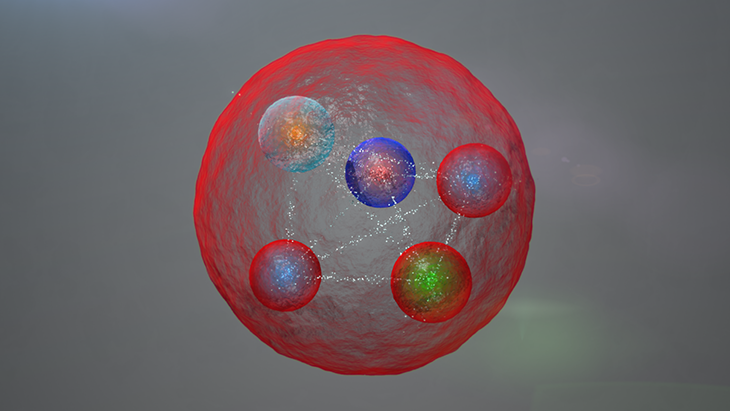It may now be the time to cheer and give a large shoutout to all the physicists who have worked tirelessly to discover more about the laws of nature. CERN has just made an announcement about the discovery of four brand new particles at the Large Hadron Collider (LHC) found in Geneva.
To date, the LHC has now discovered a total of 59 new particles. It was with the help of the Nobel prize-winning Higgs boson that has made colliding protons a possibility. Protons are particles that make up the atomic nucleus along with neutrons. This experiment started in 2009.
Since the invention of the LHC, experts knew that they were in the face of new findings and discoveries. Some of the new particles didn’t come as a surprise. After all, research started way before. However, there were also new protons discovered, many of which were a surprise.
CERN has just made an announcement about the discovery of four brand new particles at the Large Hadron Collider (LHC) found in Geneva.
The LHC was built to explore the structure of matter at the shortest distances and highest energies. No laboratory was able to do this, until LHC. They then tested out the current best theory of nature: the Standard Model of Particle Physics. To say that the LHC did more than expected is an understatement. This enabled scientists to discover the Higgs boson. This is the last missing piece of the model they created. While new discoveries have been made, the theory is still far from being fully explained and comprehended.
Why is it so difficult to explain the laws of nature and the theories behind it? One of its most challenging features is its clear representation of the strong force which holds the atomic nucleus together. As science has explained, the nucleus is made up of protons and neutrons. These, on the other hand, are composed of three tiny particles called quarks. There are six different kinds of quarks: up, down, charm, strange, top and bottom.

If these physicists were to switch the strong force off even for just a second, all matter would instantaneously disintegrate into a watery mixture of loose quarks. This was the state the universe was in at the very beginning. Of course, it must be noted that the theory of the strong interaction, supposedly called “quantum chromodynamics”, is on strong footing. The theory elaborates on how quarks interact through the strong force through the exchange of particles called gluons. Gluons are far from be being analogues of the more familiar photon, the particle of light and carrier of the electromagnetic force.
However, the way gluons mix with quarks makes the strong force around it behave contrastingly from electromagnetism. That’s because electromagnetic force gets weaker when you pull two charged particles away from each other. For the quarts, the strong force actually gets stronger. Because of its strength, quarks are always going to be locked up inside particles called hadrons. These hadrons are particles made of two or more quarks, including protons and neutrons. The only time these will be separated is when you smash them open at amazing speeds. This is exactly what they are doing at CERN.
It only gets even more complex because all the particles in the standard model have antiparticles. The latter are nearly twins to themselves but with the opposite charge, or other quantum property. If you were to remove a quark out of a proton, the action will create a force strong enough to create a quark-antiquark pair. The new quark will go into the proton so that you have a proton and a brand new meson, a particle made up of a quark and an antiquark. As strange as this idea may be, but according to quantum mechanics, a study that explains the universe on the smallest of scales, particles simply appear from empty space.
This phenomenon has been shown through experiments time and again, although a lone quark was never seen. While the theory seems all-encompassing and elaborate, the calculations needed for a simple process in electromagnetism can end up extremely complicated to the point that it’s impossible to solve. Therefore, whether or not quarks can’t exist on their own is still an unsure idea. What makes it even more difficult is that these experts can’t calculate which combinations of quarks would be useful in nature and which would be harmful.

When scientists first came across quarks, they immediately realized that several combinations should be possible, but only in theory. The combinations included pairs of quarks and antiquarks (mesons); three quarks (baryons); three antiquarks (antibaryons); two quarks and two antiquarks (tetraquarks); and four quarks and one antiquark (pentaquarks). The pairings were made with the thought that as long as the number of quarks minus antiquarks in each combination came in multiples of threes.
For the longest time, only baryons and mesons were observed in the experiments performed. In 2003, however, the Belle experiment in Japan uncovered a new particle that just didn’t fit in any of the combinations. This new finding turned out to be the first of a long series of tetraquarks. Then in 2015, the LHCb experiment at the LHC discovered two more pentaquarks. The four new particles were tetraquarks with a charm quark pair and two other quarks. All of these are particles just like the proton and the neutron. They are, however, not fundamental particles because quarks and electrons are the true building blocks of matter.

Impressive New Particles Discovered
The LHC has now uncovered 59 new hadrons, including the tetraquarks, and the new mesons and baryons. All these new particles have heavy quarks such as “charm” and “bottom”.
These hadrons do pique the curiosity. That’s because they reveal what nature considers acceptable as a bound combination of quarks, however short the combination may be. It’s also a revelation of what nature rejects. For instance, there are questions such as:
1. Why do all tetra- and pentaquarks contain a charm-quark pair (with only one exception)?
2. Why are there no corresponding particles with strange-quark pairs?
These questions come with no explanation.
There’s just so much mystery surrounding quarks. How are these particles are bound together by the strong force? Some theorize that these are compact objects, much like the proton or the neutron. Others say that these were like “molecules” formed by two loosely bound hadrons.
Each discovered hadron has allowed experiments to measure the quark’s mass and properties. These studies reveal just how the strong force behaves. The findings also bridges the gap between experiment and theory. The more hadrons these physicists discover, the better will be at fine-tuning the models to the experimental facts.
The LHC has one ultimate goal in mind: to discover physics by going above and beyond the standard model. While the standard model has been unarguably successful, understanding of particles can go beyond that and not one thing has a final say about it. That’s because some facts have shown to still be inconsistent with the cosmological models that describe the birth of the universe.
The LHC research on new fundamental particles could maybe one day connect the inconsistencies. And one day, these particles could finally be visible at the LHC, but simply hiding away in the background as particle interactions occur. Or perhaps, these new particles could make themselves known as small quantum mechanical effects in familiar processes. Either way, these experts are working nonstop to better understand the strong force that is needed to discover more.
With each new hadron, the mystery of nature’s laws could be answered, giving mankind better knowledge about the most fundamental properties of matter.
What are your thoughts? Please comment below and share this news!
True Activist / Report a typo


